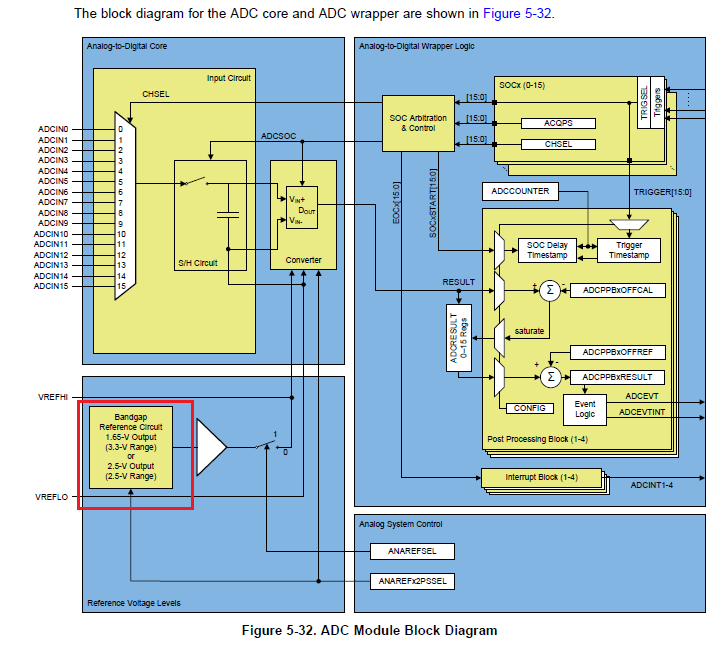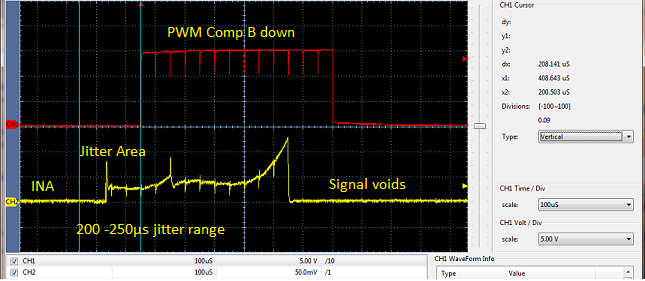Other Parts Discussed in Thread: TL081, LM741
Does the ADC have a 1.65v bandgap internal reference for full scale VREFN and VREP +3v3 for channel set to single ended input mode?
What is the benefit of 1.65v band gap internal reference, if not existing do the samples near mid VREFP become error laden?
This ADC module below used by other TI engineers to determine mid VREFP sensor functionality for all SAR type ADC, seemingly problematic for TM4C1294.
When a 1.65V internal reference voltage is selected, the effective ADC conversion input range will be VREFLO to 3.3V.




